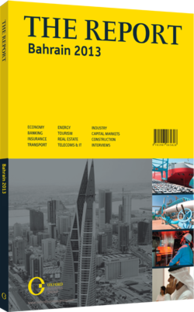Trading up: Both internal and external GCC trade have increased considerably
Boosting economic integration among the Gulf states has been a key component of the GCC since the organisation was established in late May 1981. Indeed, while the six countries that make up the GCC – namely Bahrain, Kuwait, Oman, Qatar, Saudi Arabia and the UAE – have implemented joint projects in a wide variety of sectors already, economic cooperation remains a core concern moving forward. Still, as of early 2013 the council had made a substantial amount of progress in this area.
INTRA-GCC PERFORMANCE: Over the past three decades GDP growth rates in the region have consistently been among the highest in the world, primarily due to expansive government spending and hydrocarbons-related income. At the end of 1980, the year before the GCC was established, the region showed an overarching GDP of $192bn. By the end of 2012 this figure had grown more than eight-fold to around $1.56trn. In 2012 the region posted GDP growth of around 5.3%, according to statistics from the IMF, down from 7.4% in 2011. Saudi Arabia accounted for around 47% of total regional GDP in 2012, followed by the UAE, with 23%; Qatar, with 12%; Kuwait, with 11%; Oman, with 5%; and Bahrain, with 2%, according to data from the National Bank of Abu Dhabi.
MOVEMENT OF GOODS: Trade flows both within the GCC and between the GCC and other economies have ramped up substantially since the council was founded. According to data from the IMF, in 1980 trade flows among GCC countries were at around $8bn, which was equal to around 3.77% of the region’s total trade with the rest of the world. By 2005 this figure had reached $32bn, and by 2008 it had jumped further to $67bn, which was equal to around 6% of the region’s total trade flows. Finally, by the end of 2012 intra-GCC trade was worth just under $100bn, according to data from Bahrain’s Ministry of Industry and Commerce. The considerable jump in trade within the GCC over the past decade can be attributed largely to the establishment of the GCC Customs Union in 2003 and, subsequently, the Gulf Common Market in 2008. The GCC as an economic bloc has seen a substantial rise in external trade flows over the past 30 years as well. By the end of 2011 – the most recent year for which official statistics were available as of May 2013 – the GCC’s total trade with the rest of the world was worth around $1.19trn, up from just $138bn in 1984, according to data from the Secretariat General of the GCC (SGGCC) and Bahrain’s Ministry of Industry and Commerce. The balance of trade in the GCC has historically been heavily weighted towards exports, due primarily to the region’s sales of hydrocarbons. Indeed, in 2011 exports from the region were worth $811.2bn, according to the SGGCC, compared to imports worth $379.1bn. In terms of exports, the region was ranked fifth in the world in 2011, while it was ranked 15th in the world in terms of imports. The GCC has consistently boasted the highest trade balance surplus in the world. In 2011 this figure reached $432bn, which was more than double the second-highest trade surplus of $201bn in Russia.
NEW AGREEMENTS: The region’s external trade profile has changed dramatically over the past three decades. By 2009 emerging markets accounted for around 45% of total GCC trade, which represents growth of around 11% annually since 1980. Comparatively, over the same period GCC-Organisation for Economic Cooperation and Development trade expanded by around 5%, according to Economist Intelligence Unit data. This has led to a number of potentially transformative free trade agreements (FTAs) that are now under negotiation. In 2011 trade with Association of South-East Asian Nations (ASEAN) member states accounted for nearly 8% of total GCC trade, according to the most recent data from the European Commission, with ASEAN countries constituting around 10% of GCC exports and 4.5% of imports into the GCC. ASEAN trade is projected to rise in coming years, as a result of ongoing negotiations between the two regions. In mid-2010 foreign ministers from the two blocs met in Singapore to sign a two-year action plan (later extended to 2013) with the goal of laying out an eventual blueprint for an FTA.
You have reached the limit of premium articles you can view for free.
Choose from the options below to purchase print or digital editions of our Reports. You can also purchase a website subscription giving you unlimited access to all of our Reports online for 12 months.
If you have already purchased this Report or have a website subscription, please login to continue.

